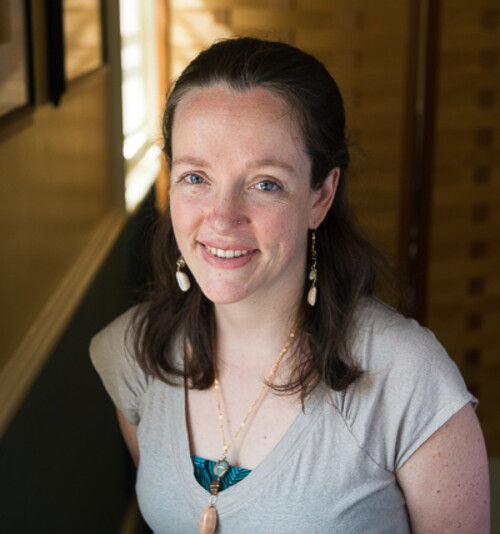Heather Olins

As an undergraduate at Wesleyan, Heather Olins studied the aquatic insects living in the streams around town. As a graduate student she has expanded her scope a little, studying the organisms that thrive around deep-sea hydrothermal vents two hundred miles off the coast of Oregon.
The Juan de Fuca Ridge 2,500 meters beneath the surface of the Pacific Ocean might not seem like the most fruitful place for biological research, but the biomass surrounding deep-sea vents can rival that of tropical rainforests. The difference is that while the circle of life on the surface begins with photosynthetic organisms, where the sun doesn’t shine it starts with microbes that derive their energy from chemical reactions, a process called chemosynthesis.
Heather studies the oxidation of sulfur by the microbes surrounding the Juan de Fuca hydrothermal vents, and specifically what temperatures are most conducive to their metabolism. Shipping out on research cruises and using the robotic submersible Alvin, of Titanic fame, Heather’s team scoops up samples of rock from the undersea volcanic “chimneys,” brings them to the surface in a biobox, blends them into a slurry, and exposes them to variable temperatures. Biochemical processes tend to happen faster at higher temperatures, but Heather’s research shows that the most productive microbes live on the outer walls the chimney, where temperatures are cooler. Although they represent some of the most thermophilic organisms on Earth, it appears even they take a ‘not too hot, not too cold’ approach to life.
“For most biologists,” says Heather, “the bottom of the sea is where carbon goes to die. It sinks, and it doesn’t come back up. I’m studying what might happen to that carbon next, in a processes that night be much more common than we’re aware.” Through her deep-sea microbes, she is not only exploring the outer limits of life on Earth, but possibly of life beyond it, too. “If there is life on other planets, it’s less likely to be photosynthetic than chemosynthetic.” And thanks to Heather’s research on life in the most alien places on Earth, we may know where to look for it.

